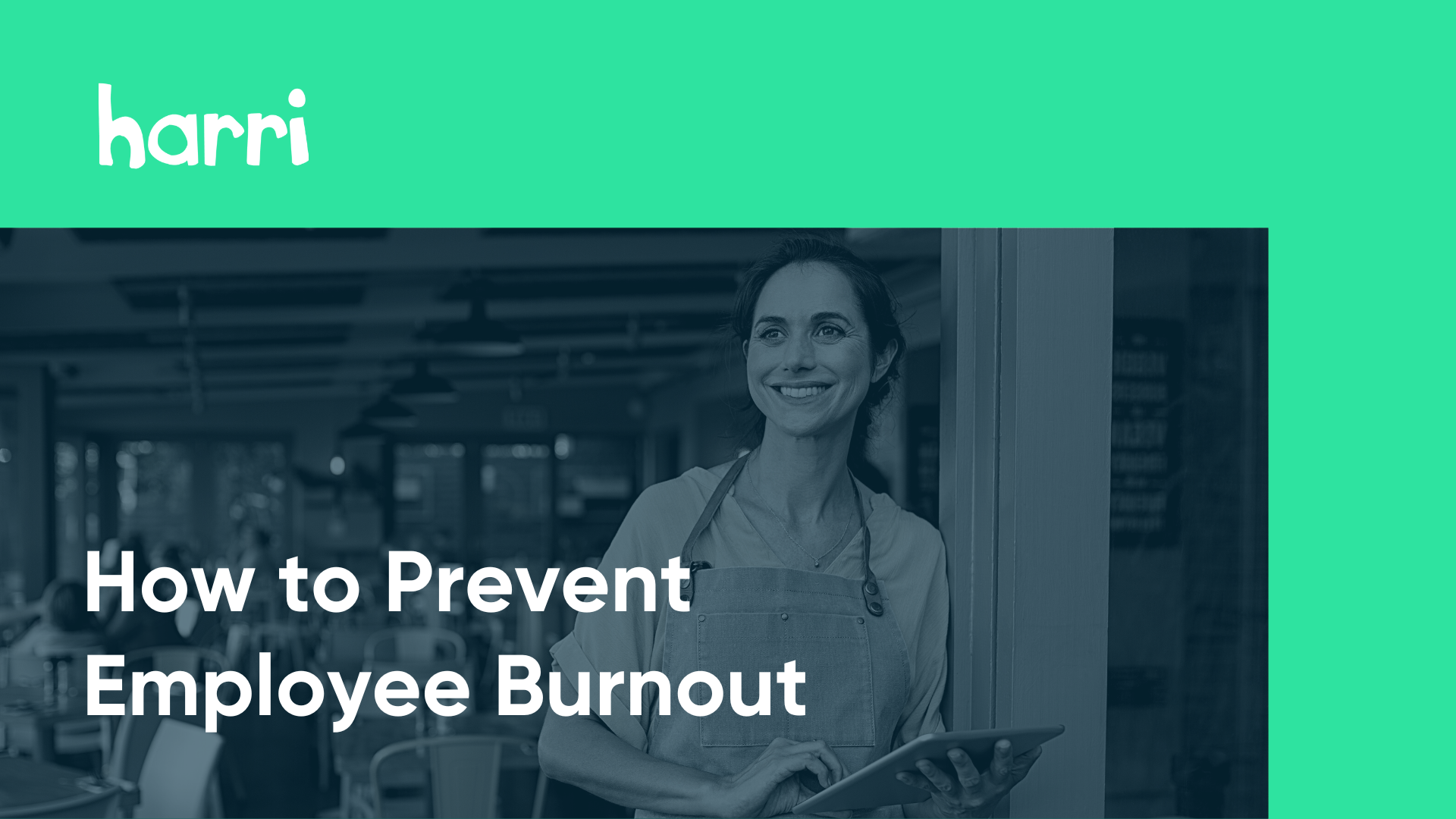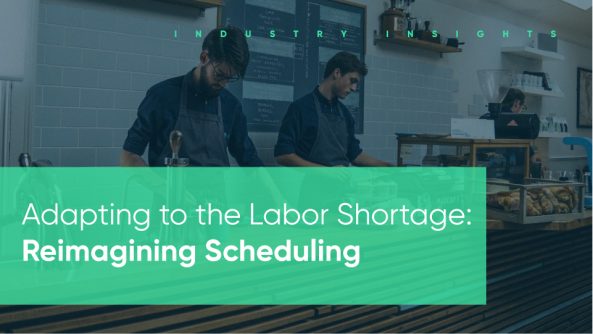How to Prevent Employee Burnout

- By Harri Insider Team | January 13, 2023
It seems we can’t catch a break from crises. From the pandemic to economic uncertainty, it’s fair to say that the world has been through a lot in the last few years. No wonder employee exhaustion is on the rise, with mentions of burnout on Glassdoor up by 40% since 2019.
If you’re unfamiliar with the term ‘burnout’, or you don’t know how to identify the signs and stop symptoms in their tracks, this post is for you! For the past several years, managers and business owners have struggled to implement burnout prevention strategies for their workforce, especially among employees who work on the frontline. Recognizing the signs and engaging employees is the best way to prevent burnout in the workplace.
What is workplace employee burnout?
In 2019, the World Health Organization (WHO) officially labelled burnout as an occupational phenomenon ‘resulting from chronic workplace stress that has not been successfully managed.’ While not necessarily an official medical diagnosis, burnout can definitely affect one’s mental and physical health.
Ultimately, it’s a state of mental, emotional, and sometimes even physical exhaustion caused by prolonged stress. This can affect all levels of the workforce, from upper management to frontline employees, impacting the quality of work across an organisation. As you can imagine, gaining knowledge of burnout symptoms is an important way of preventing the condition.
Recognising the signs and symptoms of burnout
As with other stress-related syndromes, burnout isn’t the same for everyone. That said, you should watch out for these common physical symptoms:
- Low energy and constantly feeling tired
- Change in eating or sleeping habits
- Feeling overwhelmed or negative about work
- Reduced work performance and procrastination
- Increased frustration and irritability
- Frequent headaches, muscle aches, or back pain
- Feeling empty
In terms of workplace performance, job burnout could manifest itself in the following ways:
- Lack of motivation in completing tasks
- Not deriving enjoyment or satisfaction from work
- A sense of inefficacy, or frustration with basic obligations.
Why burnout prevention matters
Unfortunately, burnout doesn’t go away by itself. If left untreated, it can worsen over time – potentially leading to serious physical or mental health problems. As such, it’s essential to recognise the warning signs of burnout and act before it becomes a bigger problem for your employees and your business.
Preventing employee burnout
Fortunately, managers have some control over the primary causes of burnout. Over the past several years, it has become an expectation that employers will promote a healthy work environment by helping their workforce learn how to manage stress at work, establish clear expectations around responsibilities, communicate clearly, and ensure that staff members feel supported.
There are numerous measures employers can (and should) take to actively prevent employee burnout, a few of which we’ve outlined below.
Encourage time off
It’s well-documented that overworking can lead to burnout, so it’s important to encourage employees to take deserved time off to unwind and recharge their batteries. This is a simple but effective step. Yet, Glassdoor found that just 34% of workers in the UK said that their employers encourage them to use all their annual leave – and only 60% used their entire holiday allowance. Hesitation to take necessary time off may lead to exhaustion and employee burnout.
Monitor schedules and tasks
Ensure your employees aren’t working too much or too often, after all, there’s a fine line between productivity and overworking. And team members who push themselves to their limits (or beyond) are at a higher risk of job burnout. So don’t pile on the pressure or expect unreasonable outcomes.
Instead, create flexible working schedules, implement fair workloads, and promote a healthy work-life balance. A smart scheduling platform is a helpful way of keeping your employees satisfied and working the right number of hours for their lifestyle and health.
Give employees a purpose
A lack of growth and development opportunities can contribute to burnout and cause employee retention issues. Avoid this with clear goals, role expectations, and advice on career progression as early as the onboarding process. The risk of burnout reduces significantly when workers know exactly what’s expected of them, and where they can grow.
Promote workplace wellness
In today’s hectic world, it’s essential to create a supportive culture that focuses on well-being. This starts with actively listening to work-related problems, ensuring everyone’s opinions are heard and considered. It’s equally as important to recognise hard work and achievements – no matter how small. This can create a sense of belonging for employees and help you to identify potential problems before they escalate.
Maintain an environment of open communication
While most roles come in with built-in mechanisms to receive regular performance reviews and feedback, it’s important that your employees feel comfortable raising their concerns to management as well. Open and honest communication in the workplace is a key way of continually creating a better environment for all employees, and subsequently, your customer base. The best employers show their concern for their staff by giving them their time, awareness, and attention.
What to do if you observe employee burnout
Say you notice someone experiencing burnout, or they tell you that they feel exhausted in the workplace, take a moment to talk and listen to their concerns. Then, when you understand their position, work closely with them to find a solution – whether that’s encouraging leave or rearranging their shifts.
Hiring and engaging employees with Harri
If you’re struggling to identify or prevent employee burnout in your business, a workforce engagement solution might help. Book a demo with one of our employee experience experts to see how our engagement platform could work for you.


















